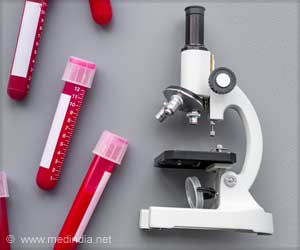
Dr. Doe and his team are tracing the cell divisions that form a fly's nervous system. "Producing the right cells at the right time is essential for normal development, yet it's not well understood how an embryonic precursor cell or stem cell generates a characteristic sequence of different cell types," he says. Dr. Doe and his team traced the cell lineages of 30 neuroblasts (stem cell-like neural precursors), each cell division generating a daughter cell bound for specialization as well as a self-renewing neuroblast. The dance of development is a matter of balance. Self-renew too much, and a tumor results; not enough, and the brain shrinks.
Tracing a cell lineage is a little like sketching a family tree of cousins who share a great-grandparent – except that the great-grandparent (the neuroblast) continually produces more cousins. "The offspring will change due to the different environments they are born into," says Dr. Doe.
Julie A. Brill, Ph.D., a principal investigator at The Hospital for Sick Children (SickKids) in Toronto, investigates cell polarity in sperm cells. These highly specialized elongated cells begin as more spherical precursor cells. Groups of developing sperm elongate, align, condense their DNA into tight packages, expose enzyme-containing bumps on their tips that will burrow through an egg's outer layers, form moving tails, then detach and swim away.
The Brill lab studies a membrane lipid called PIP2 (phosphatidylinositol 4,5-bisphosphate) that establishes polarity in developing male germ cells in Drosophila. "Reducing levels of PIP2 leads to defects in cell polarity and failure to form mature, motile sperm," Dr. Brill says. These experiments show that localization of the enzyme responsible for PIP2 production in the growing end of elongating sperm tails likely sets up cell polarity. Since loss of this polarity is implicated in the origin and spread of cancer, defects in the regulation of PIP2 distribution may contribute to human cancer progression, she adds.
Stephen DiNardo, Ph.D., professor of cell and developmental biology at the Institute for Regenerative Medicine at the University of Pennsylvania, is investigating how different varieties of stem cells in the developing fly testis give rise to germ cells and epithelial cells that ensheathe the germ cells, as well as being able to self-renew. For each of these roles, stem cells are guided by their environment, known as their "niche."
Advertisement
Denise J. Montell, Ph.D., professor of biological chemistry at Johns Hopkins University, will report on the female counterpart to the testis, the fly ovary. She and her co-workers use live imaging and fluorescent biomarkers to observe how the contractile proteins actin and myosin assemble, disassemble, and interact, elongating tissues in ways that construct the egg chamber. These approaches are particularly valuable for observing the response of the developing ovary to environmental changes. "Starvation, for example, slows the rate of stem cell division and induces some egg chambers to undergo apoptosis (die) while others arrest until conditions improve," she says.
Advertisement
Source-Eurekalert














